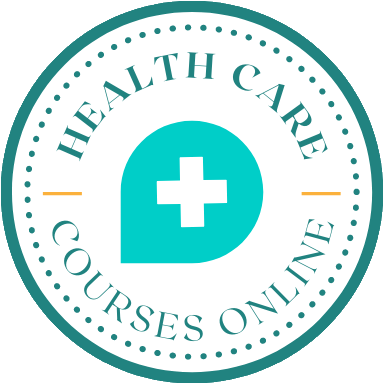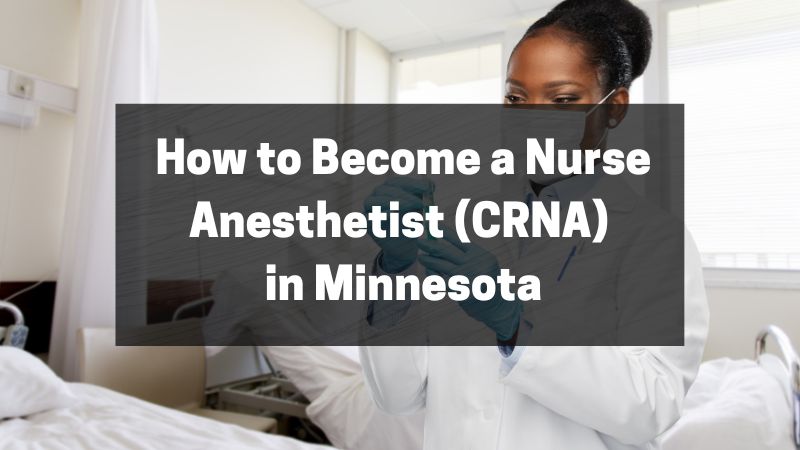Are you an RN who is seeking better opportunities, flexibility, and higher salaries?
Or perhaps you are a nursing student with a lot of ambition and drive to reach the top of the nursing industry.
Well, we understand why you are interested in becoming a nurse anesthetist.
CRNAs are one of the most in-demand and highly-paid advanced practice nurses in Minnesota! They have very challenging yet rewarding careers.
However, becoming a CRNA is not easy. It requires time, dedication, and money.
The process is long and can seem a bit overwhelming.
But in this article, we’ll simplify the process for you, without leaving out any necessary information!
We’ll show you how to become a nurse anesthetist (CRNA) in Minnesota in just 6 steps.
We’ll also answer the following FAQs:
- How much do CRNAs in Minnesota earn?
- What are the highest-paying states for CRNAs?
- Can CRNAs in Minnesota practice independently?
- What are the biggest challenges of CRNAs today?
Without further ado, let’s dive in!
How to Become a Nurse Anesthetist (CRNA) in Minnesota in 6 Steps
Here is an overview:
- Graduate with a Baccalaureate Degree in Nursing
- Gain Experience as an RN
- Obtain a Master’s (before 2025) or Doctorate Degree
- Take and Pass the NCE
- Apply for Your CRNA License from the Minnesota BON
- Maintain and Renew Your License
Let’s begin.
Step #1: Graduate with a Baccalaureate Degree in Nursing
Before you can become a Certified REGISTERED NURSE Anesthetist (CRNA) in Minnesota, you first have to become an RN.
To do this, you need to complete your RN education from an accredited program.
Enroll in an Accredited RN Program
Although there are two ways to complete your nursing education (ADN and BSN), it’s advisable to aim for a baccalaureate degree with a nursing major from an accredited program.
Admission into CRNA programs is highly-competitive, as they usually only accept a few students per year, and most require a BSN as the minimum educational requirement.
So, getting a BSN degree gives you a better chance of being accepted into a CRNA program
The Bachelor of Science in Nursing, or BSN, is a four-year program that focuses on the medical aspects of nursing.
Just remember to choose a program that is accredited by the Minnesota Board of Nursing. Check the list here.
Apply for Licensure
To be able to practice as an RN, you can apply for your RN license from the Minnesota Board of Nursing.
Depending on where you are in your nursing journey, you can apply through examination (by taking the NCLEX) or endorsement (if you are already an RN in another state).
Minnesota is also a Nursing Licensure Compact (NLC) state, which means that if you are from another NLC state with a multi-state license, then you can practice as an RN in Minnesota without having to apply for a Minnesota license.
For more details on how to become an RN in Minnesota, you can read this simple guide.
Step #2: Gain Experience
Now that you’re a licensed RN, you need to gain at least one year of experience in an acute care facility.
Having experience in critical care is crucial as it will make you more competent in handling difficult situations when you become a CRNA.
Here are the most preferred critical care experiences:
- Medical ICU
- Coronary ICU
- Pediatric ICU
- Surgical Intensive Care Unit
- Cardiothoracic ICU
Take note that some CRNA programs may require two or more years of critical care experience.
Step #3: Obtain a Master’s (before 2025) or Doctorate Degree
You’re a few steps away from becoming a CRNA. To be fully equipped, you must obtain a master’s or doctorate in nursing.
You can start looking for state-approved CRNA schools in Minnesota. Make sure to check the qualifications and guidelines for the application since schools have different requirements.
Here is the list of the general requirements for admission:
- A BSN degree or other relevant BS degree
- Licensed RN
- Minimum one-year nursing experience in an acute care facility
- High GPA
CRNA programs in Minnesota take 24 to 36 months to complete and include clinical and classroom settings.
The classroom discussions focus on the following topics:
- Anatomy
- Biochemistry
- Physiology
- Pathophysiology
- Physics
- Chemistry
- Pharmacology
The clinical experience includes anesthesia procedures and techniques for different types of obstetrics and surgery.
By 2025, all CRNA applicants must hold a doctorate with a major in nurse anesthesia. This is because a doctorate will make you a more versatile and competent healthcare professional.
Since CRNA programs may take up to 36 months, applicants are advised to transition to a doctorate program by 2022.
Step #4: Take and Pass the NCE
Finally, you’re almost there!
After completing the additional nursing education requirement, you can now take the National Certification Examination or NCE.
The NCE is similar to the NCLEX, it’s just that it is designed to gauge your knowledge and readiness in becoming a nurse anesthetist.
The NCE is administered by the National Board of Certification and Recertification for Nurse Anesthetics (NBCRNA).
To help you devise a study plan, below are the details of the NCE’s content:
- Equipment, Instrumentation, and Technology (15%)
- Basic Sciences (25%)
- Basic Principles of Anesthesia (30%)
- Advanced Principles of Anesthesia (30%)
Reviewing for the NCE can be overwhelming, but all your hard work will be paid off once you pass it!
Step #5: Apply for Your CRNA License from the Minnesota BON
To obtain your CRNA license, you must notify the Minnesota BON each time you complete national certification in your practice area. Failure to do so may result in disciplinary action or a penalty fee.
The Board accepts certifications from the following organizations:
- American Association of Critical-Care Nurses Certification Corporation
- American Academy of Nurse Practitioners
- American Nurses Credentialing Center
- American Midwifery Certification Board
- National Certification Corporation for the Obstetric, Gynecological, and Neonatal Nursing Specialties
- Pediatric Nursing Certification Board
- National Board of Certification and Recertification for Nurse Anesthetists
You need to submit proof of the following to the Minnesota BON:
- Current Minnesota RN license or eligibility for licensure
- Current recognized APRN certifications in good standing
- Completion of an accredited APRN program
- National Certification in Gerontology or Adult population
- Background check with the Board
- Completed Confirmation of Program Completion for APRN form
- Completed Confirmation of APRN Employment form
- Post-Graduate Practice Verification form; or completed 2080 post-graduate practice hours
For CRNAs who practice nonsurgical pain management, you must complete the Verification of CRNA Written Prescribing Agreement form and mail it to the Board.
You can find all the details here.
Step #6: Maintain and Renew Your License
APRNs in Minnesota are not required to complete any additional continuing education hours to renew their license.
However, they must have a current certification in the role and population for which they are licensed on file with the Board.
Your current APRN certification meets the 24 contact hours of continuing education requirement for the RN license during a 24-month registration period.
The certifying organization determines the continuing education requirements for renewing your certification.
Frequently Asked Questions About Becoming a CRNA in Minnesota
Hurray! We’ve covered the 6 steps to becoming a CRNA!
But you may still have some questions related to CRNA practice. Let’s answer a few of them now.
How much do CRNAs in Minnesota earn?
In Minnesota, the annual average salary of CRNAs is $222,540 according to the Bureau of Labor Statistics.
This is higher than the national mean wage of $205,770.
What are the highest-paying states for CRNAs?
The salary of CRNAs depends on their specialty, years of experience, and location. Location plays a major role in determining the expected salary of workers.
According to the U.S. Bureau of Labor and Statistics, the highest-paying state is North Dakota with an average annual salary of more than $239,200 per year followed by California with an average annual salary of $246,510.
Can CRNAs in Minnesota practice independently?
Yes!
Minnesota allows APRNs to practice independently except when treating chronic or acute pain. During that time, the CRNA must collaborate with a physician for the treatment plan and prescriptive agreement.
What are the biggest challenges of CRNAs today?
Nurse anesthetists play an important role in the healthcare industry. Despite having lots of career opportunities and being well-compensated, CRNAs face challenges in their profession.
Here are some of the challenges they face today:
- Nurse shortage
- Increase demand
- Training and education barriers
- Malpractice lawsuits
- Burnout
Conclusion
And there you have it!
Becoming a CRNA can be overwhelming.
You need to undergo years of training and education to be able to practice as one. Not to mention the two national certifying examinations you need to pass!
But knowing what to expect and what direction to take will help you strategize and plan how to reach your goal.
And that’s exactly what this guide provides you with.
You can now embark on your journey fully equipped as to what to expect.
Now, it’s your turn to venture out and take the first step!
If this is truly your passion, then go for it!
We’re rooting for you!

